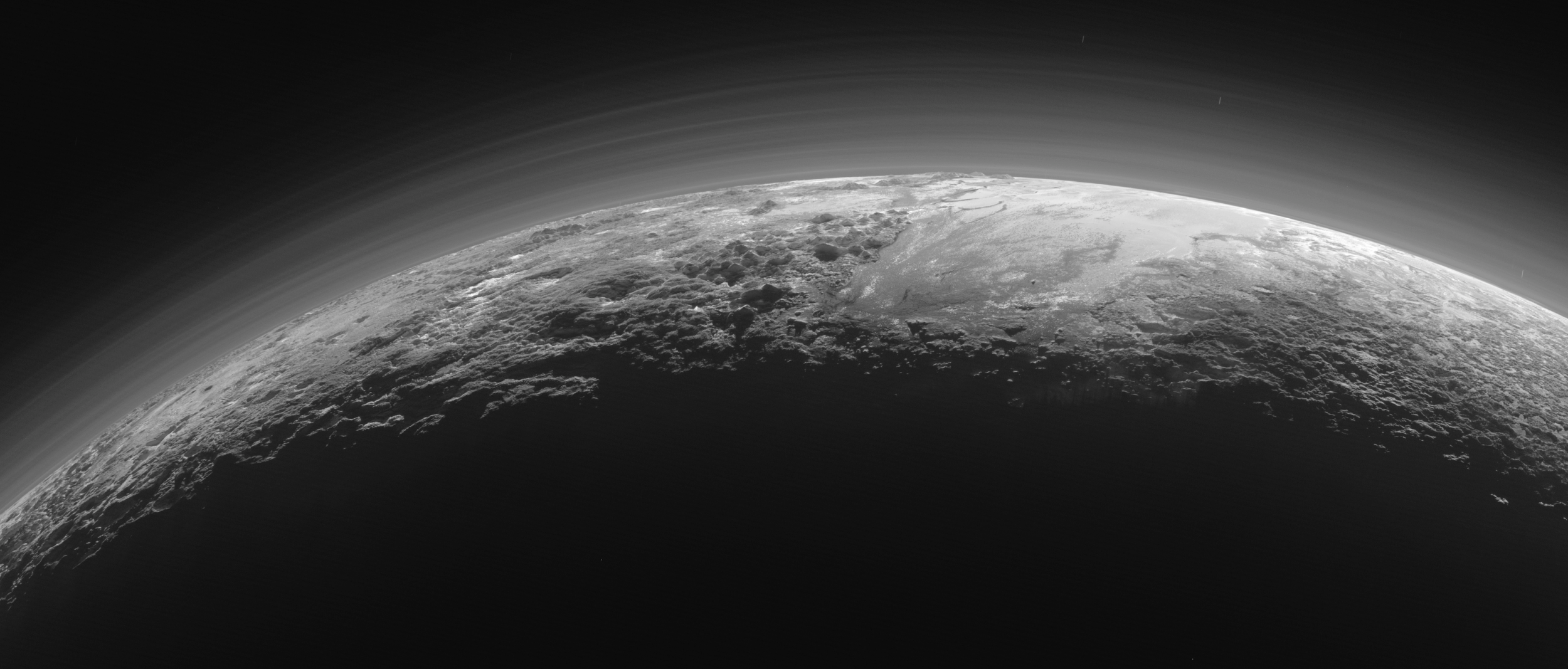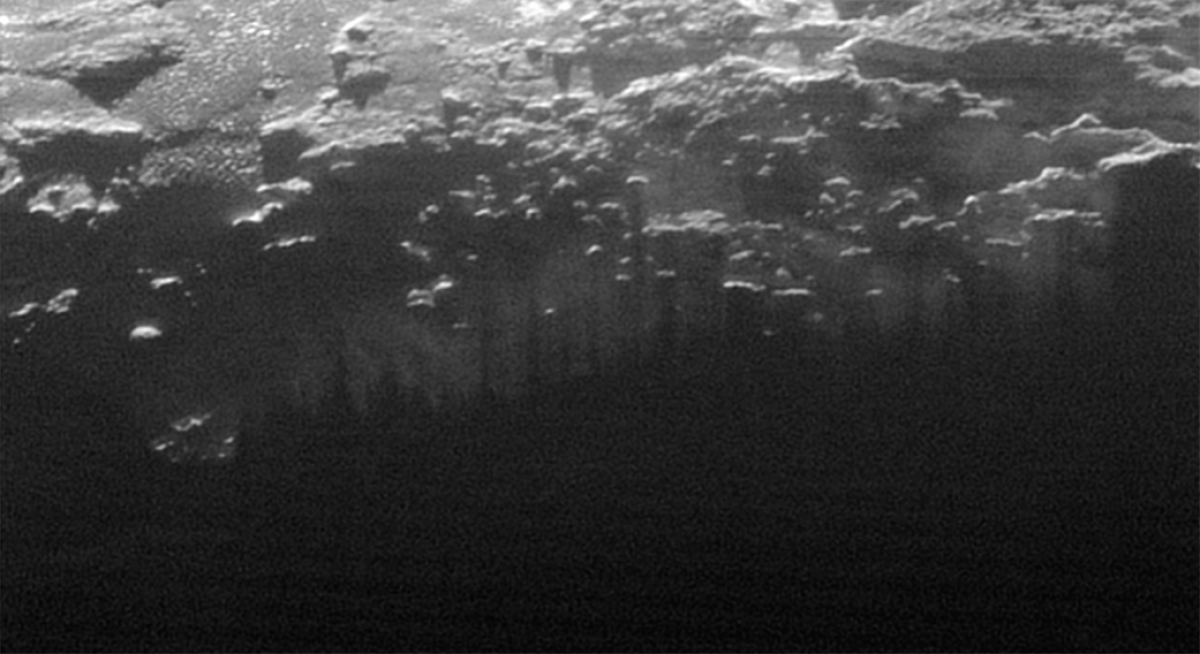
More than two months have passed since the New Horizons spacecraft made its historic flyby of Pluto on the morning of July 14. But the moment of closest approach, at roughly 7:49 that morning, was just the harbinger of a trove of new information still to come. The spacecraft continues to send back data, like the image NASA released on Thursday that was taken by its wide-angle Ralph/Multispectral Visual Imaging Camera just 15 minutes after the flyby.
"This image really makes you feel you are there, at Pluto, surveying the landscape for yourself," New Horizons Principal Investigator Alan Stern is quoted as saying of the panorama downlinked from the spacecraft on Sunday and published Thursday, which shows a 780-mile stretch of the dwarf planet. "But this image is also a scientific bonanza, revealing new details about Pluto's atmosphere, mountains, glaciers and plains."
Fifteen minutes after flying past Pluto, at 11,000 miles above its surface, the New Horizons spacecraft turned around to face the dwarf planet, the sun lighting it from behind, to capture the high-resolution image of the landscape.
The smooth, icy plain on the right side of the image has been informally named Sputnik Planum (or Sputnik Plain, after the Earth's first artificial satellite). To the west of the plain, one can see mountains that rise to heights of up to 11,000 feet above Pluto's surface, and to the east "rougher terrain is cut by apparent glaciers."
The scientists have released two additional versions of the same image that zoom in on smaller sections of the landscape to show 230- and 115-mile stretches.

Scientists point out layers in the dwarf planet's extended nitrogen atmosphere that extend to at least 60 miles above the surface, as well as some fog or low-lying haze. "In addition to being visually stunning, these low-lying hazes hint at the weather changing from day to day on Pluto, just like it does here on Earth," Will Grundy, lead of the New Horizons Composition team, is quoted as saying.

Uncommon Knowledge
Newsweek is committed to challenging conventional wisdom and finding connections in the search for common ground.
Newsweek is committed to challenging conventional wisdom and finding connections in the search for common ground.
About the writer
Stav is a general assignment staff writer for Newsweek. She received the Newswomen's Club of New York's 2016 Martha Coman Front ... Read more
To read how Newsweek uses AI as a newsroom tool, Click here.






